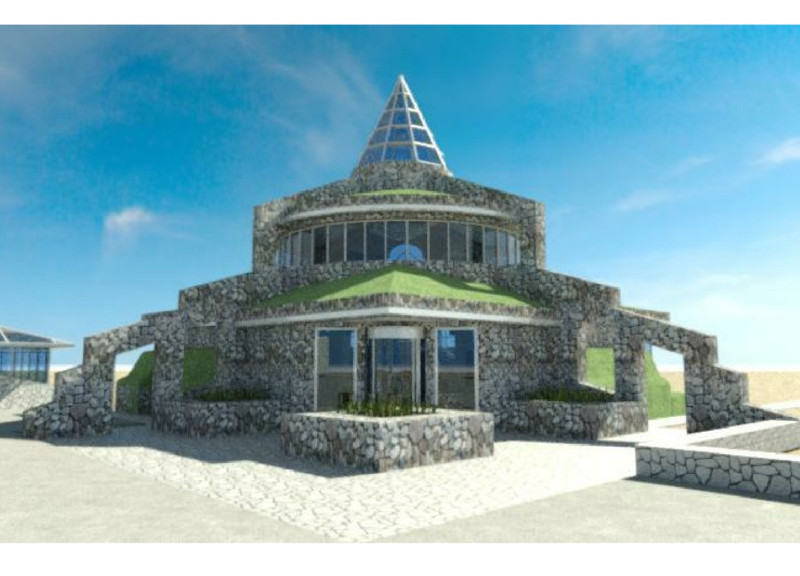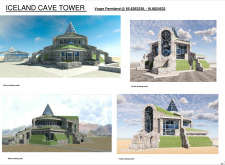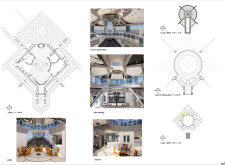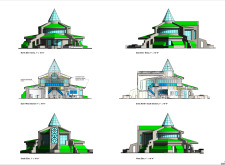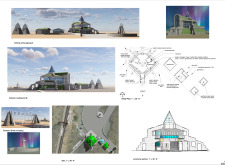5 key facts about this project
The design of the Iceland Cave Tower is directly inspired by Iceland's unique geological features, including its volcanic formations and cave systems. This approach emphasizes a seamless integration of the built environment into the dramatic topography, allowing for an architectural statement that is as much about its surroundings as it is about the structure itself. By utilizing an organic, conical form, the tower resembles a natural formation, creating a visual dialogue with the rugged Icelandic landscape.
Functionally, the tower serves multiple purposes, including residential space, observation areas, and communal facilities. Each level of the tower is meticulously planned to accommodate various activities while ensuring that each area benefits from ample natural light and views of the stunning scenery. The use of expansive glass panels throughout the structure allows for transparency and fluidity, blurring the boundaries between interior and exterior spaces. This thoughtful design approach creates an inviting atmosphere, drawing occupants and visitors into a shared experience of the surrounding beauty.
Material choice plays a critical role in the architectural identity of the Iceland Cave Tower. The predominant use of natural stone for the facade resonates with the local geology, providing not only aesthetic charm but also thermal mass, which helps regulate indoor temperatures. This is complemented by the extensive use of glass, which serves to connect inhabitants with the breathtaking views of the landscape. The integration of green roofs, designed to host vegetation, enhances the environmental performance of the building while contributing to local biodiversity. Furthermore, the incorporation of a steel framework ensures structural integrity, enabling the design to feature expansive glass surfaces.
In addition to aesthetics and functionality, the Iceland Cave Tower showcases an array of sustainable design strategies. A rainwater collection system is implemented to utilize natural resources efficiently, while geothermal heating draws from the region's inherent geological features. Outdoor spaces incorporate radiant heated benches, promoting comfort and usability during Iceland's colder months, thereby increasing the tower's accessibility throughout the year.
One of the notable elements of this architectural project is its focus on public engagement. The observation decks are strategically placed to foster interaction and encourage visitors to connect with one another while appreciating the stunning vistas. This aspect reinforces the notion that architecture can serve as a platform for community building and social interaction, creating opportunities for engagement beyond mere functionality.
The design of the Iceland Cave Tower is a thoughtful reflection of its context, embracing its environment while advocating for sustainability and community interaction. The careful selection of materials and the innovative use of design elements work together to create an experience that is as much about connecting with nature as it is about providing a functional space.
For those interested in exploring the nuances of the Iceland Cave Tower, it is worthwhile to review the architectural plans, architectural sections, and architectural designs to gain deeper insights into the creative ideas that shaped this project. Engaging with the detailed representations will provide a comprehensive understanding of how this architectural endeavor embodies a synthesis of function, form, and environmental sensitivity. This project stands as a testament to the potential of architecture to harmonize with natural landscapes, while simultaneously serving the needs of its inhabitants.


